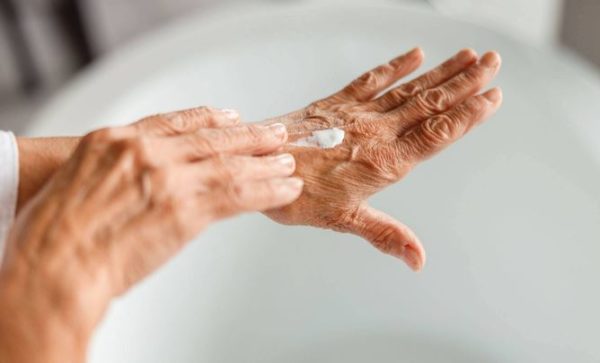Collagen is a vital protein that supports skin elasticity and joint flexibility.
While collagen supplements are popular, consuming collagen-rich foods is a natural way to boost collagen production.
Bone broth, fish and seafood, lean protein, eggs, dark leafy greens, citrus fruits, berries, bell
In this article, we will delve into the causes of crepey skin, effective treatment options, and how you can care for your skin to mitigate its effects.
Understanding the causes of
crepey skin is crucial in addressing this issue effectively. Several factors contribute to the development of
crepey skin:
1. Aging: The primary factor behind crepey skin is the natural aging process. As we grow older, our skin undergoes changes, including a decrease in collagen and elastin production. These two proteins play a pivotal role in maintaining skin elasticity and firmness. When their levels decrease, the skin becomes more prone to wrinkling and sagging.
2. Sun exposure: Prolonged and unprotected exposure to the sun’s harmful UV rays can accelerate skin aging and contribute to the development of
crepey skin. UV radiation damages collagen and elastin fibers, leading to premature aging.
3. Lack of moisture: Proper hydration is essential for healthy skin. When the skin lacks moisture, it can become dry and more susceptible to creping.
4. Smoking and poor lifestyle choices: Smoking is known to accelerate the aging process of the skin, including the development of
crepey skin. Unhealthy lifestyle choices such as an imbalanced diet and excessive alcohol consumption can also contribute to skin aging.
While
crepey skin is a natural part of aging, several treatments can help improve its appearance and texture:
1. Topical retinoids: Retinoids, derived from vitamin A, can stimulate collagen production and improve skin texture. Consult with a dermatologist to determine the most suitable retinoid for your skin type.
2. Hydration: Maintaining proper skin hydration is crucial. Use a high-quality moisturizer daily to lock in moisture and improve skin elasticity.
3. Chemical peels: Chemical peels can remove the top layer of damaged skin, promoting collagen production and revealing smoother, fresher skin beneath.
4. Microneedling: This minimally invasive procedure involves the use of tiny needles to stimulate collagen production. It can significantly improve
crepey skin when performed by a trained professional.
5. Ultherapy: Ultherapy is a non-invasive procedure that uses ultrasound technology to stimulate collagen production and tighten skin.
Preventing
crepey skin and managing its effects involves adopting a comprehensive skincare routine:
1. Sun protection: Always use sunscreen with broad-spectrum SPF when exposed to sunlight. Wear protective clothing, sunglasses, and wide-brimmed hats to shield your skin from UV rays.
2. Hydration: Keep your skin well-hydrated by using a moisturizer that suits your skin type. Consider using a product with hyaluronic acid, which can attract and retain moisture.
3. Healthy lifestyle: Avoid smoking and limit alcohol consumption. Maintain a balanced diet rich in antioxidants and vitamins that promote skin health.
4. Regular exercise: Physical activity improves blood circulation, which can benefit your skin’s overall health and appearance.
5. Consult a dermatologist: If you’re concerned about
crepey skin, consult with a dermatologist who can recommend personalized treatment options and skincare products.
In conclusion,
crepey skin is a common issue, especially as we age, but it’s not something you have to simply accept. By understanding its causes and implementing appropriate skincare and treatment strategies, you can improve the texture and appearance of your skin, ultimately enhancing your confidence and well-being.







